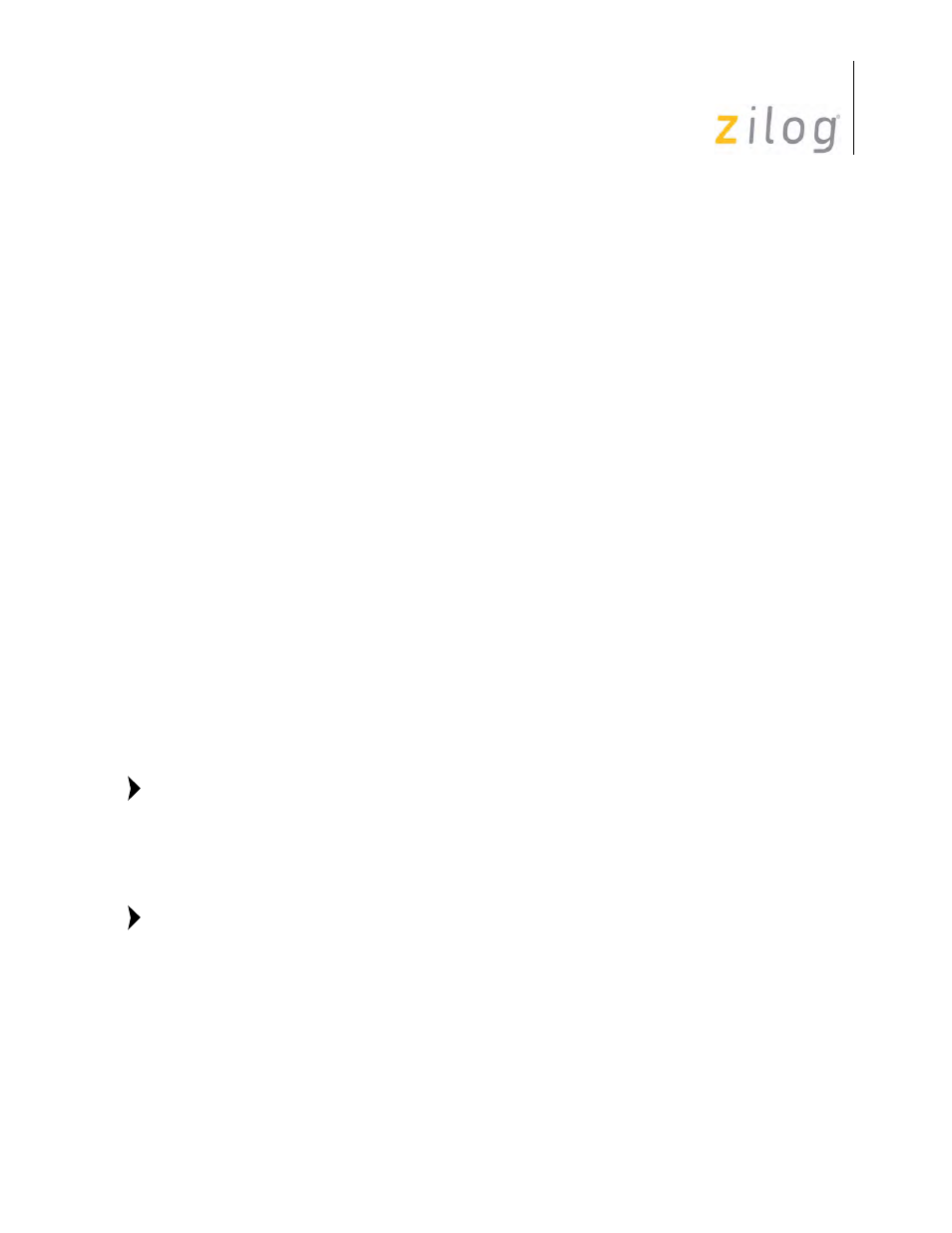Zilog Z80230 User Manual
Page 53

SCC/ESCC
User Manual
UM010903-0515
Interfacing the SCC/ESCC
46
response time can use this mode to generate an interrupt when one byte is received, but still allow
up to seven more bytes to be received without an overrun error. By polling the Receive Character
Available bit, RR0 D0, and reading all available data to empty the FIFO before exiting the inter-
rupt service routine, the frequency of interrupts can be minimized.
WR7' D3=1, the ESCC generates an interrupt when there are four bytes in the Receive FIFO or
when a special condition is received. By setting this bit, the ESCC generates a receive interrupt
when four bytes are available to read from the FIFO. This allows the CPU not to be interrupted
until at least four bytes can be read from the FIFO, thereby minimizing the frequency of receive
interrupts. If four or more bytes remain in the FIFO when the Reset Highest IUS command is
issued at the end of the service routine, another receive interrupt is generated.
When a special receive condition is detected in the top four bytes, a special receive condition inter-
rupt is generated immediately. This feature is intended to be used with the Interrupt On All
Receive Characters and Special Condition mode. This is especially useful in SDLC mode because
the characters are contiguous and the reception of the closing flag immediately generates a special
receive interrupt. The generation of receive interrupts is described in the following two cases:
Case 1:
Four Bytes Received with No Errors. A receive character available interrupt is triggered
when the four bytes in receive data FIFO (from the exit side) are full and no special conditions
have been detected. Therefore, the interrupt service routine can read four bytes from the data FIFO
without having to read RR1 to check for error conditions.
Case 2:
Data Received with Error Conditions. When any of the four bytes from the exit side in the
receive error FIFO indicate an error has been detected, a Special Receive condition interrupt is
triggered without waiting for the byte to reach the top of the FIFO. In this case, the interrupt ser-
vice routine must read RR1 first before reading each data byte to determine which byte has the
special receive condition and then take the appropriate action. Since, in this mode, the status must
be checked before the data is read, the data FIFO is not locked and the Error Reset command is not
necessary.
The above cases assume that the receive IUS bit is reset to zero in order for an interrupt to
be generated.
WR7' D3 should be written zero when using Interrupt on First Character and Special Condition or
Interrupt on Special Condition Only. See the description for Interrupt on All Characters or Special
Condition mode for more details on this feature.
The Receive Character Available Status bit, RR0 D0, indicates if at least one byte is avail-
able in the Receive FIFO, independent of WR7' D3. Therefore, this bit can be polled at any
time for status if there is data in the Receive FIFO.
Receive Interrupts Disabled
This mode prevents the receiver from requesting an interrupt. It is used in a polled environment
where either the status bits in RR0 or the modified vector in RR2 (Channel B) is read. Although
the receiver interrupts are disabled, the interrupt logic can still be used to provide status.
Note:
Note:
